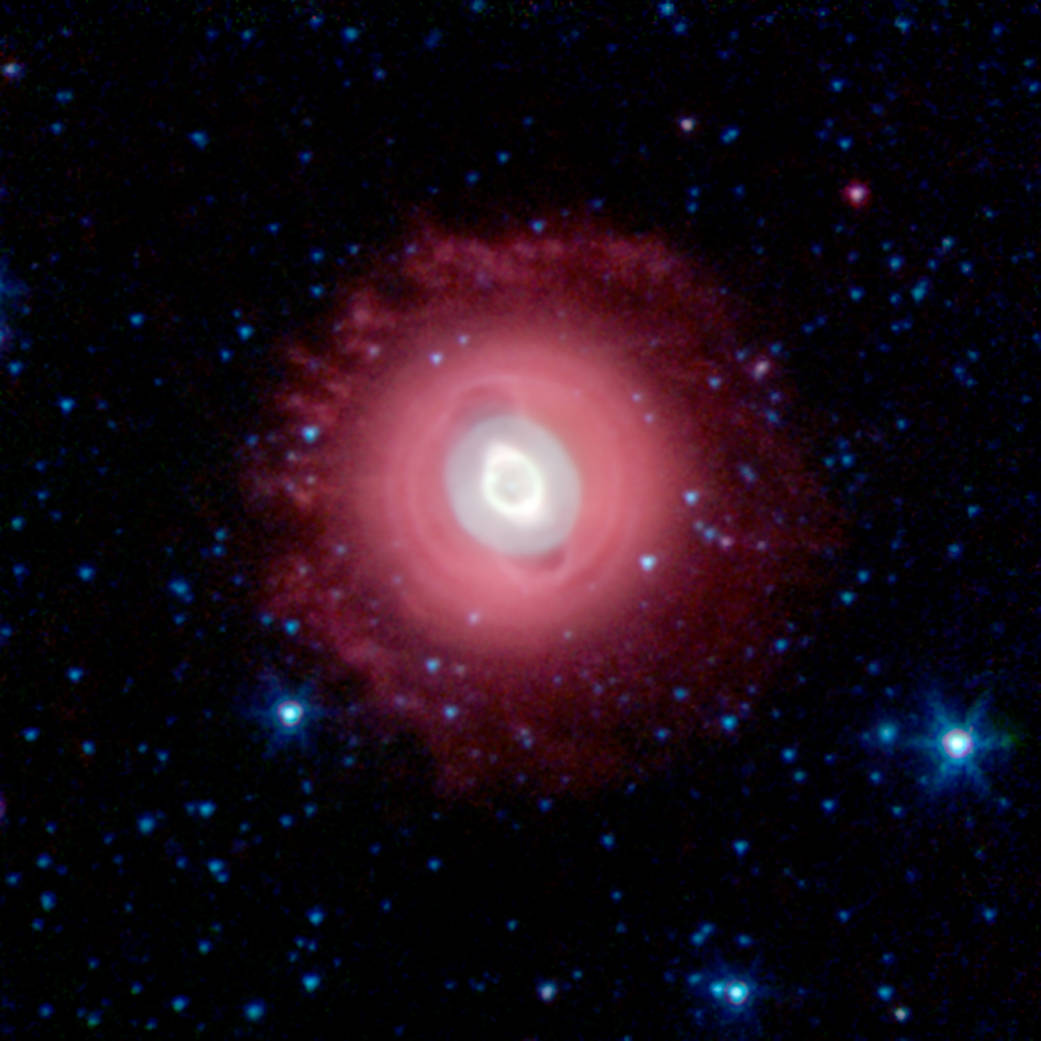This ghostly image from NASA’s Spitzer Space Telescope shows the disembodied remains of a dying star, called a planetary nebula. Planetary nebulas are a late stage in a sun-like star’s life, when its outer layers have sloughed off and are lit up by ultraviolet light from the central star. The Ghost of Jupiter, also known as NGC 3242, is located roughly 1,400 light-years away in the constellation Hydra. Spitzer’s infrared view shows off the cooler outer halo of the dying star, colored here in red. Also evident are concentric rings around the object, the result of material being periodically tossed out in the star’s final death throes.
In this image, infrared light at wavelengths of 3.6 microns is rendered in blue, 4.5 microns in green, and 8.0 microns in red.
NASA’s Jet Propulsion Laboratory, Pasadena, Calif., manages the Spitzer Space Telescope mission for NASA’s Science Mission Directorate, Washington. Science operations are conducted at the Spitzer Science Center at the California Institute of Technology in Pasadena. Data are archived at the Infrared Science Archive housed at the Infrared Processing and Analysis Center at Caltech. Caltech manages JPL for NASA.
Image Credit: NASA/JPL-Caltech/Harvard-Smithsonian CfA




























